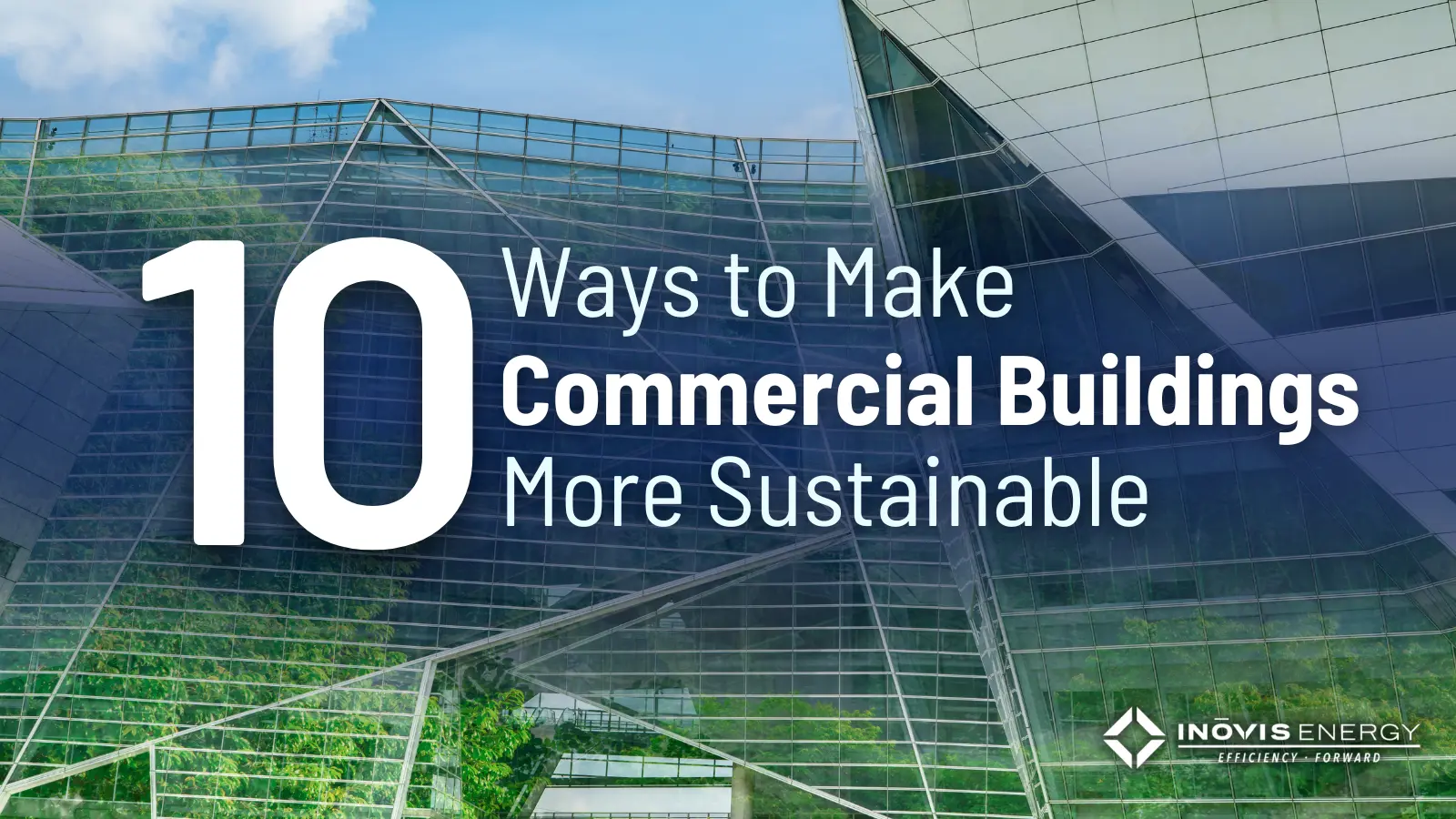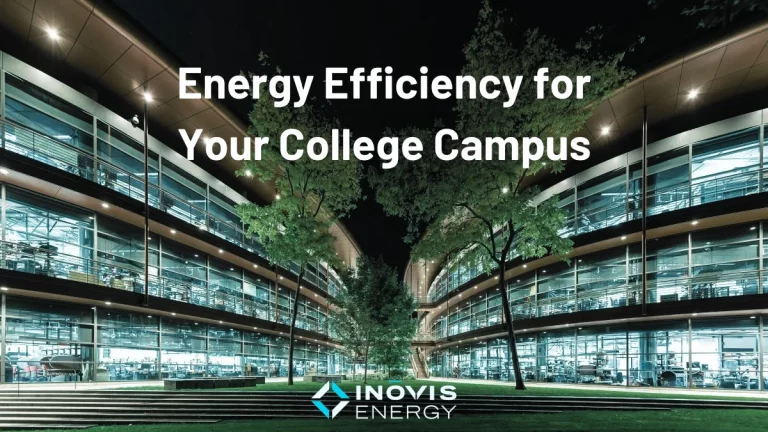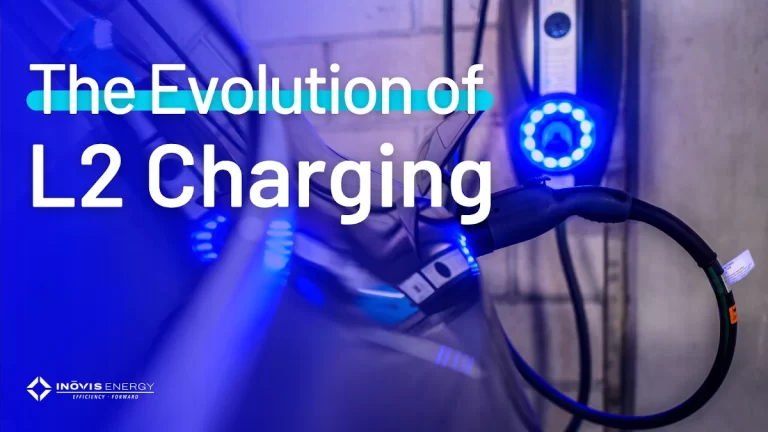As commercial property managers, we have a responsibility to reduce the environmental impact of our buildings while maximizing efficiency and cost savings. Sustainable practices not only benefit the environment but they also improve the bottom line and enhance the reputation of the property.
However, with so many options and strategies available, it can be overwhelming to know where to start. That’s why we’ve put together this guide of 10 practical and effective ways to make a commercial property more sustainable.
From energy-efficient upgrades to waste reduction initiatives, these tips will help you achieve your sustainability goals and create a healthier, more sustainable building for your tenants and the planet.
These are 10 of the top ways commercial property managers can make the properties they manage more sustainable.
1. Implement energy-efficient lighting and HVAC systems
By replacing traditional lighting with LED or other energy-efficient alternatives, energy consumption can be significantly reduced. This, in turn, can lead to lower energy bills, which is beneficial for the property owner and tenants alike.
Similarly, upgrading HVAC systems to newer, more efficient models can reduce energy consumption and costs. By using less electricity, energy-efficient HVAC systems can also reduce the carbon footprint of the building by lowering greenhouse gas emissions.
Moreover, energy-efficient systems can be controlled more easily to maximize efficiency. For example, advanced controls can be used to automatically adjust lighting and HVAC systems based on occupancy and other factors, reducing energy waste and improving overall efficiency. This not only reduces costs but also ensures that the building is operating in a sustainable manner.
In short, upgrading to energy-efficient lighting and HVAC systems is a key step towards making a commercial building more sustainable, leading to lower energy consumption and costs, reduced greenhouse gas emissions, and improved overall efficiency.
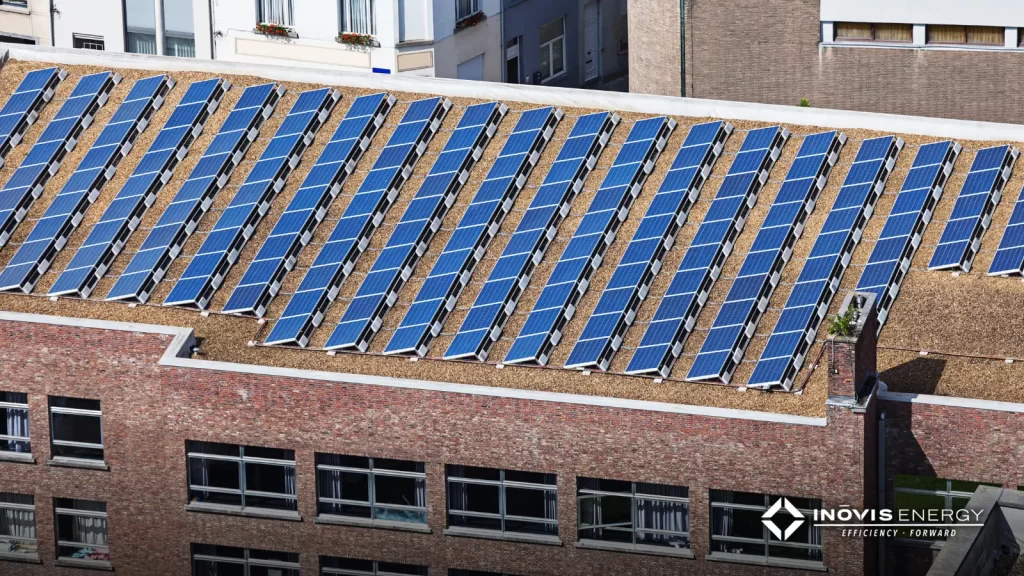

2. Install solar panels or other renewable energy sources
Generating on-site electricity through solar panels, wind turbines, or other renewable energy sources means the building can reduce its dependence on non-renewable energy sources like fossil fuels. This, in turn, reduces the carbon footprint of the building and helps to mitigate the negative impacts of climate change.
Additionally, on-site electricity generation through renewable energy sources can lead to cost savings in the long term. While the initial cost of installation may be high, the energy generated can offset the costs over time, leading to lower energy bills and a more sustainable building.
Installing renewable energy sources can increase the energy independence of the building, making it less vulnerable to disruptions in the grid or energy supply. This can be particularly important during emergencies or other events that may impact the energy supply.
Overall, installing solar panels, wind turbines, or other renewable energy sources is an effective way to make a commercial building more sustainable. It reduces the carbon footprint, leads to long-term cost savings, and increases energy independence.
3. Use low-flow plumbing fixtures to reduce water consumption
Low-flow toilets and faucets are plumbing fixtures designed to use less water than traditional fixtures. They are designed to reduce the amount of water that is wasted during use while still effectively performing their intended function.
Low-flow toilets typically use no more than 1.6 gallons of water per flush, compared to traditional toilets that can use up to 5 gallons of water per flush. Low-flow faucets are designed to restrict the flow of water, reducing the volume of water used without compromising the effectiveness of the fixture.
In addition to reducing water usage, low-flow toilets, and faucets can also help to reduce energy usage and costs, as less water needs to be heated and pumped throughout the building. They can help property managers can significantly reduce the amount of water used by tenants and the building as a whole. This, in turn, can help conserve this valuable resource and reduce the overall water usage of the building.
In addition to reducing water usage, low-flow plumbing fixtures can also lead to cost savings. By using less water, the building can reduce its water bills, which is beneficial for both the property owner and tenants.
Moreover, by conserving water, property managers can help to reduce the impact of the building on the environment. Water conservation is an important part of sustainability, as it helps to reduce the strain on water resources and ensure that they are available for future generations.
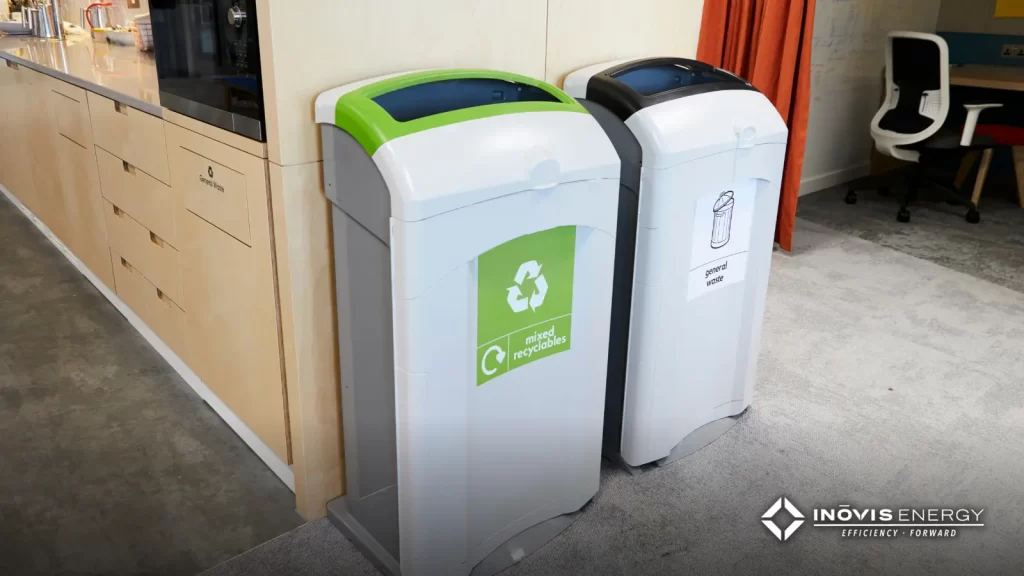

4. Encourage tenants to recycle and provide recycling bins
Promoting recycling and providing easily accessible recycling bins can reduce waste and encourage a culture of sustainability among tenants. Recycling diverts waste from landfills, which can help reduce greenhouse gas emissions and conserve natural resources, all while reducing the environmental impact of the building.
A commercial recycling program is only effective if it is used consistently. Here are a few tips to help build a successful recycling program that will help make a commercial building more sustainable.
- Educate employees: Start by educating employees about the importance of recycling and the impact that it can have on the environment. This can include providing training on what can be recycled and how to dispose of waste properly.
- Provide clearly marked recycling bins: Make sure that recycling bins are easily accessible and clearly marked. Consider using different colors or labels to differentiate between different types of waste, such as paper, plastic, and glass.
- Place recycling bins strategically: Place recycling bins in high-traffic areas such as break rooms, kitchens, and copy rooms. This will make it more convenient for employees to dispose of waste properly and increase the likelihood that they will recycle.
- Partner with waste management companies: Partner with waste management companies that offer recycling services and provide support for implementing and maintaining a recycling program.
- Monitor the program: Regularly monitor the recycling program to ensure that it is effective and to identify areas for improvement. This can include conducting waste audits to identify areas where waste can be reduced and tracking the amount of waste that is recycled.
- Celebrate success: Celebrate the success of the recycling program and recognize employees who actively participate. This can include sharing success stories, providing incentives for employees who recycle, and acknowledging employees who go above and beyond in their efforts to reduce waste.
5. Use environmentally-friendly cleaning products
Switching to environmentally-friendly cleaning products is an important step in promoting sustainability and reducing the environmental impact of a building.
Traditional cleaning products often contain harsh chemicals that can be harmful to both the environment and human health. These chemicals can be released into the air or water supply, potentially causing harm to wildlife and ecosystems. Additionally, exposure to these chemicals can be harmful to humans, especially those with pre-existing health conditions or weakened immune systems.
By switching to environmentally-friendly cleaning products, property managers can reduce the use of these harmful chemicals and promote a healthier and safer environment for tenants and occupants. Environmentally-friendly cleaning products are typically made from natural, biodegradable ingredients that are less harmful to the environment and humans.
Moreover, environmentally friendly cleaning products can be just as effective as traditional cleaning products, if not more so. They are designed to effectively clean and disinfect surfaces without the need for harsh chemicals.
6. Conduct regular energy audits to identify areas for improvement
Conducting regular energy audits is an important step in helping commercial property managers run a more sustainable building.
An energy audit involves analyzing the energy consumption of a building to identify areas of inefficiency and waste. By conducting regular energy audits, property managers can identify where energy is being wasted and develop a plan to improve energy efficiency.
Once areas of inefficiency are identified, property managers can take steps to address them. This may include upgrading to energy-efficient lighting and HVAC systems, installing insulation, sealing air leaks, or using smart building technologies to monitor and optimize energy usage.
By improving energy efficiency, property managers can reduce energy consumption and save on utility costs. Additionally, reducing energy consumption can reduce the carbon footprint of the building, which is beneficial for the environment.
Moreover, energy audits can help property managers identify opportunities to take advantage of renewable energy sources. For example, if an energy audit reveals that the building receives ample sunlight, property managers may consider installing solar panels to generate on-site electricity.
7. Plant trees and vegetation to absorb carbon emissions
Planting trees and vegetation around a commercial building is a simple yet effective way to make it more sustainable. Here are some ways in which this can be achieved:
- Absorb carbon emissions: Trees and other plants absorb carbon dioxide from the air during photosynthesis, which can help to reduce the amount of greenhouse gases in the atmosphere. By planting trees and vegetation around a commercial building, property managers can help to offset the carbon emissions produced by the building, making it more sustainable.
- Improve air quality: Trees and vegetation also play a vital role in improving air quality. They absorb pollutants from the air and produce oxygen, which can help to create a healthier environment for tenants and occupants.
- Reduce heat absorption: Trees and vegetation can also help to reduce heat absorption by shading the building and its surroundings. This, in turn, can reduce the need for air conditioning and other cooling systems, leading to lower energy usage and costs.
- Enhance biodiversity: Planting trees and vegetation around a commercial building can help to create habitats for wildlife and promote biodiversity in urban environments. This can help to improve the ecological balance in the surrounding area and enhance the overall sustainability of the building.
- Increase property value: Planting trees and vegetation around a commercial building can also increase its aesthetic appeal and property value. This can attract tenants and buyers who value sustainability and appreciate a green, healthy environment.
8. Use smart building technologies like networked lighting controls and EMS systems
Smart building technologies like networked lighting controls and Energy Management System (EMS) systems are effective ways to monitor and optimize energy usage in commercial buildings.
Networked lighting controls use sensors and software to adjust lighting levels based on occupancy and daylight availability automatically. For example, the system may automatically dim or turn off lights in areas that are unoccupied or adjust lighting levels based on the amount of natural light available in a room. By doing so, networked lighting controls can significantly reduce energy waste and improve overall energy efficiency.
Similarly, EMS systems use sensors and software to monitor and control HVAC systems, lighting, and other building systems. These systems can automatically adjust temperature settings, adjust lighting levels, and optimize energy usage based on occupancy and other factors. By doing so, EMS systems can reduce energy consumption and improve overall energy efficiency, leading to cost savings and improved sustainability.
Overall, smart building technologies like networked lighting controls and EMS systems are valuable tools for commercial property managers looking to improve the sustainability and efficiency of their buildings. By automatically adjusting lighting and HVAC systems based on occupancy and other factors, these systems can significantly reduce energy waste and improve overall energy efficiency, leading to cost savings and a more sustainable building.
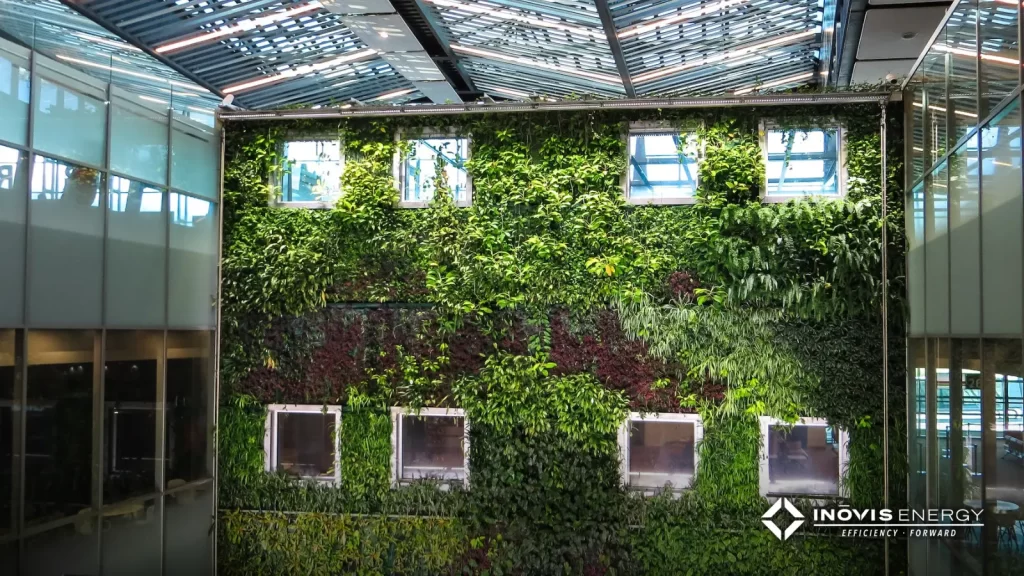

9. Install green roofs or walls to improve insulation and air quality
Green roofs and walls are essentially layers of vegetation that are installed on the roof or wall of a building. They typically contain a waterproof membrane, drainage layer, growing medium, and vegetation. The vegetation used may be a combination of plants, shrubs, and trees that are chosen for their ability to thrive in a particular environment.
The benefits of green roofs and walls include improved insulation, reduced heat absorption, and improved air quality. The vegetation layer on the roof or wall can act as insulation, reducing heat loss in the winter and heat gain in the summer. This can help to reduce energy consumption and lower energy bills.
Additionally, this attractive and effective feature can help to reduce the heat island effect, which is a phenomenon where urban areas are significantly warmer than surrounding rural areas due to the absorption of heat by buildings and pavement. By reducing heat absorption, green roofs and walls can help to mitigate the heat island effect and create a cooler, more comfortable environment for tenants and occupants.
The vegetation on green roofs and walls can also help to absorb pollutants and improve air quality, which can lead to a healthier and more sustainable environment for occupants.
10. Offer incentives for tenants who adopt sustainable practices
Offering incentives is an effective way to encourage tenants to adopt sustainable practices and contribute to a more sustainable building community.
Incentives can take many forms, but they are typically designed to reward tenants for taking steps to reduce their environmental impact or contribute to the sustainability of the building.
Some examples of incentive programs that property managers can implement include:
- Reduced rent: Property managers may offer reduced rent to tenants who take steps to reduce their energy consumption or adopt sustainable practices.
- Green leasing: Green leasing is a lease agreement that includes sustainability requirements and incentives for tenants. For example, a green lease may require tenants to recycle or use energy-efficient lighting and provide incentives for tenants who meet these requirements.
- Recognition: Property managers may recognize tenants who have taken steps to reduce their environmental impact or contribute to sustainability efforts. This can include awards, certificates, or public recognition of their efforts.
- Access to amenities: Property managers may offer access to amenities that promote sustainability, such as bike storage, electric vehicle charging stations, or community gardens.
- Education and training: Property managers may offer education and training programs to help tenants understand how they can reduce their environmental impact and adopt sustainable practices.
By offering incentives, property managers can encourage tenants to take an active role in promoting sustainability and contribute to a more sustainable building community. Incentive programs can also help to create a culture of sustainability within the building, leading to long-term environmental benefits and cost savings.
Final Thoughts
Sustainable practices are not only good for the environment, but they also benefit the bottom line and enhance the reputation of the property. Implementing sustainable practices in commercial buildings is a responsibility that property managers should take seriously.
This guide of 10 practical and effective ways to make a commercial property more sustainable provides a starting point for property managers who are looking to reduce the environmental impact of their buildings while maximizing efficiency and cost savings.
At Inovis Energy, we are committed to helping commercial property managers achieve their sustainability goals. By working together, we can create a healthier, more sustainable building for tenants and the planet. Contact us today to schedule a zero-cost energy audit and learn more about how we can help you achieve your sustainability goals.
